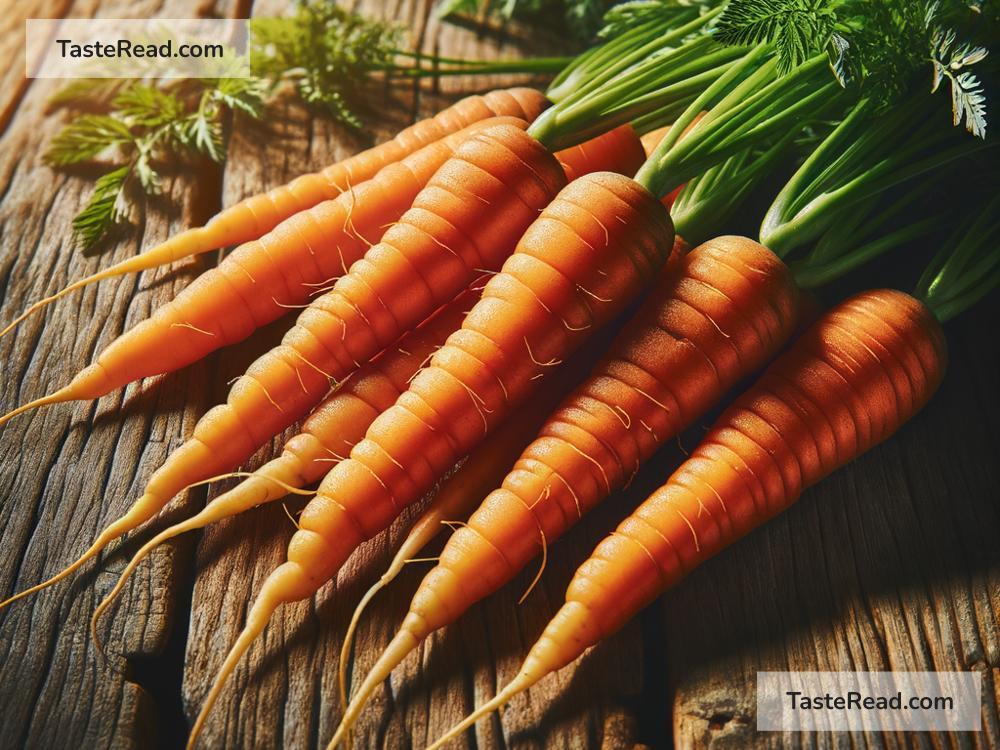Why Carrots Are Packed with Beta-Carotene: A Simple Explanation
Carrots are one of the best-loved vegetables worldwide, whether you eat them raw, cooked, juiced, or even incorporated into desserts. One of the standout reasons these colorful root veggies are so popular is their impressive nutrient profile, especially beta-carotene. But what is beta-carotene, and why do carrots have so much of it? Let’s break down the science and history behind this fascinating topic in plain, simple language.
What Is Beta-Carotene?
Beta-carotene is a type of pigment found naturally in plants, fruits, and vegetables. It belongs to a group of compounds known as carotenoids, which give many plants their bright yellow, orange, and red colors. When you think of oranges, pumpkins, or sweet potatoes, beta-carotene is often the pigment responsible for their vibrant hues.
But beta-carotene is more than just a color-maker! It’s also a key nutrient for humans. When you eat foods that contain beta-carotene, your body converts it into Vitamin A. Vitamin A is essential for healthy eyesight, a strong immune system, and proper growth.
Why Do Carrots Have So Much Beta-Carotene?
Carrots are famous for their bright orange color, which is a clear sign of their rich beta-carotene content. The reason they are packed with this nutrient lies in their role as root vegetables.
Carrots store nutrients in their taproot—the part of the plant that grows underground—for survival. These stored nutrients give the plant energy to sprout leaves and flowers in order to reproduce. Beta-carotene plays an important part because it helps protect the carrot plant’s cells from damage caused by light and oxygen when it grows. Beta-carotene also helps the carrot survive environmental stress and thrive in different conditions.
In short, beta-carotene is like a shield for the carrot. And when we eat carrots, we get all the benefits of this protective nutrient for ourselves!
How Does Beta-Carotene Help Us?
If you’ve heard people say, “Carrots are good for your eyes,” they’re talking about beta-carotene. Once your body converts beta-carotene into Vitamin A, it has several powerful effects on your health:
-
Improves Vision: Vitamin A is crucial for good eyesight. In fact, it helps you see in low-light conditions. Ever heard of night blindness? That’s often caused by a lack of Vitamin A.
-
Boosts Immunity: Vitamin A strengthens your immune system, helping your body fight off infections and illnesses.
-
Promotes Healthy Skin: Beta-carotene and Vitamin A protect your skin from damage caused by sunlight, keeping it smooth and healthy.
-
Supports Growth and Development: Vitamin A helps with the development of tissues in your body, making it vital for growing kids and maintaining adults’ health.
Why Are Carrots Orange?
Not all carrots are orange! Originally, carrots were purple, yellow, or even white in color. They were first grown thousands of years ago in regions like Persia (modern-day Iran and Afghanistan). Orange carrots, the kind we are most familiar with today, were cultivated much later in Europe, around the 16th century.
Farmers selectively bred carrots to increase their beta-carotene content, giving them their distinctive bright orange hue. Today, orange carrots dominate the market, but you might still find purple, red, and yellow ones as specialty varieties.
Interestingly, purple carrots also contain beta-carotene, but their color is masked by another pigment called anthocyanin.
Are Carrots the Best Source of Beta-Carotene?
Carrots are one of the richest sources of beta-carotene, but they’re not the only option. Other foods high in beta-carotene include sweet potatoes, spinach, kale, mangoes, and butternut squash. However, due to their affordability, taste, and versatility, carrots have become the go-to vegetable for anyone looking to boost their beta-carotene intake.
How to Get the Most Out of Beta-Carotene in Carrots
To maximize the benefits of beta-carotene in carrots, there are some tricks you can try:
-
Cook Them Slightly: Cooking carrots lightly, such as steaming or roasting, makes it easier for your body to absorb beta-carotene. But don’t overdo it; you want to preserve their nutrients!
-
Pair Them with Healthy Fats: Beta-carotene is fat-soluble, which means your body absorbs it better when it’s eaten with fat. Pair carrots with olive oil, avocado, or nuts for a nutrient boost.
-
Eat Them in Different Forms: Whether raw, cooked, or blended into smoothies, carrots are versatile. Experiment to find what works best for you.
Final Thoughts: Why We Love Carrots
Carrots aren’t just a crunchy and tasty snack—they’re also nutritional powerhouses packed with beta-carotene. This pigment gives carrots their classic orange color, helps protect the plant, and turns into Vitamin A in your body to support your health.
So, next time you eat a carrot (or drink carrot juice), remember just how much this humble vegetable is doing for your vision, immune system, and skin. And with so many ways to enjoy them—in salads, soups, casseroles, or on their own—there’s no excuse not to take advantage of their benefits.
Carrots are proof that sometimes, good things really do come in small, colorful packages. Eat up, and let those beta-carotene benefits shine through!


